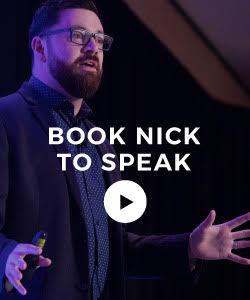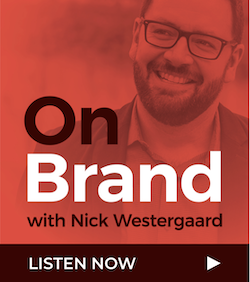Social media changes the world around us nearly every day. No where is this shift more prevalent than in our higher education system as colleges and universities work to adapt and prepare students for careers in social media, content creation, and digital marketing. David Perlmutter tackles this every day. Perlmutter is the director of the School of Journalism and Mass Communication (JMC) at the University of Iowa, as well as a documentary photographer and the author or editor of nine books on political communication and persuasion.
As a platinum sponsor of this fall’s Social Brand Forum, I sat down with David and got his take on these shifts and their impact on education, journalism, and communications.
What’s changing most in how we prepare students for the new media landscape?
Twenty-five years ago, JMC majors ended up being specialists: camera operators, public relations copywriters, graphic designers, political campaign strategists. Of course, many people switched careers. It’s proverbial that you scratch a great public relations person and you’ll find someone who started out as a reporter. But now we know our students have to be “one-woman bands,” able to express themselves and tell great stories in words, images, symbols, charts, even music across all technological venues and platforms. That’s a huge challenge for which to prepare, for the mind of the average student and for the curriculum, facilities, and faculty of a school.
How are the digital and social media offerings at the University of Iowa’s School of Journalism and Mass Communication different and unique from other institutions?
Every JMC program has been trying to figure out how to introduce new media technologies, platforms, and venues and the many new kinds of work that is defined as “communications and media.” In our case, we are very proud of how we think we marry everything that is exciting, new, and useful with the traditions that are still incredibly important to produce superior communicators. For example, you probably won’t be able to take a course here that doesn’t have a social media component of some kind. At the same time, I have never been at a school that emphasized writing so strongly. Every employer I meet, indeed, says, “Whatever you do, teach ’em how to write.”
You lead the School of Journalism and Mass Communication and I teach in the College of Business. Both areas include social media courses and have a lot of students “cross-pollinating” back and forth. Do you think there should be more collaboration like this?
Of course. Our students have always ended up communicating within the world of business. Many alumni spent their careers not in public relations firms or at newspapers but in other kinds of institutions, from non-profits to government to corporations. Marketing, your area, is revolutionizing through social media. You could say that marketing is merging with us and what we teach. At the same time, I think it’s more important than ever for our students to understand numbers and have a grounding in entrepreneurialism, two business school specialties. We overlap more than we diverge.
As you see these new media shifts, what’s coming next that you see impacting the kind of courses the School of Journalism is going to have to offer?
I am a strong believer in experimentation. We have to try new approaches and new venues. Just to take some examples, we now offer the nation’s only certificate program in fundraising and philanthropy communication. This is for students wanting to work supporting non-profit causes, including advancement and development. We are offering new classes in event planning and video game communication. These aren’t larks; there are entire giant career categories with many interesting permutations. At the same time, we will continue to have that strong central curriculum in visual, verbal, print, symbolic, and graphic communication, critical thinking and ethics. Again, I think the best education is one that marries the latest and the greatest with the tried and the true.
Though the news and media landscape has changed dramatically in recent years, you often say that this is one of the most exciting times to be in the field. Why is that?
In a few words, reverse mentoring—or perhaps better put by one of our Ph.D. students, Shawn Harmsen, “co-mentoring.” Our graduates are being hired! They have new skills that no one in the office has been trained in. They are the digital natives who will determine the future of all media. The employers know that putting them together with the seniors in teams is what will make their businesses innovate and thrive. I honestly think that this is the most exciting time in the history of the world to be interested in a career in journalism or strategic communication. People will listen to you, they will respect you, no matter how old they are. They know you are the key to their success.
What are you most excited for about this fall’s Social Brand Forum?
It’s a great opportunity to partner with SourceMedia/The Gazette and you to showcase all the amazing new developments across communications, for our students and for local entrepreneurs and managers. Many new ideas and solutions to existing problems are coming from all quarters. The problem is that we often don’t track who is doing what. This is an opportunity for all of us — educators, practitioners, students — to come together and learn about what is working and what is on the horizon.
Thanks David! Great insights on new media, education, and more! We look forward to seeing you at this fall’s Social Brand Forum. For more information on the School of Journalism & Mass Communication check out this (student-made!) video and the info below.
About the School of Journalism & Mass Communication at the University of Iowa
Established in 1924, the University of Iowa School of Journalism and Mass Communication has long been recognized as a leader in undergraduate (B.A./B.S.) and graduate (M.A. and Ph.D.) education and research in journalism (print, broadcast and online news and information) and strategic communication (political communication, health communication, advertising, public relations, branding and nonprofit advocacy & fundraising) and media research. The first Ph.D. in Mass Communication was awarded at Iowa in 1948. The School features a state-of-the-art building, technology and facilities, about a dozen staff, twenty full-time faculty, 30 graduate students and 650 undergraduates.
Among Iowa SJMC’s latest additions are a new Fundraising & Philanthropy Communication Certificate program and advanced Media Research Lab to partner with industry to test innovations in media.









